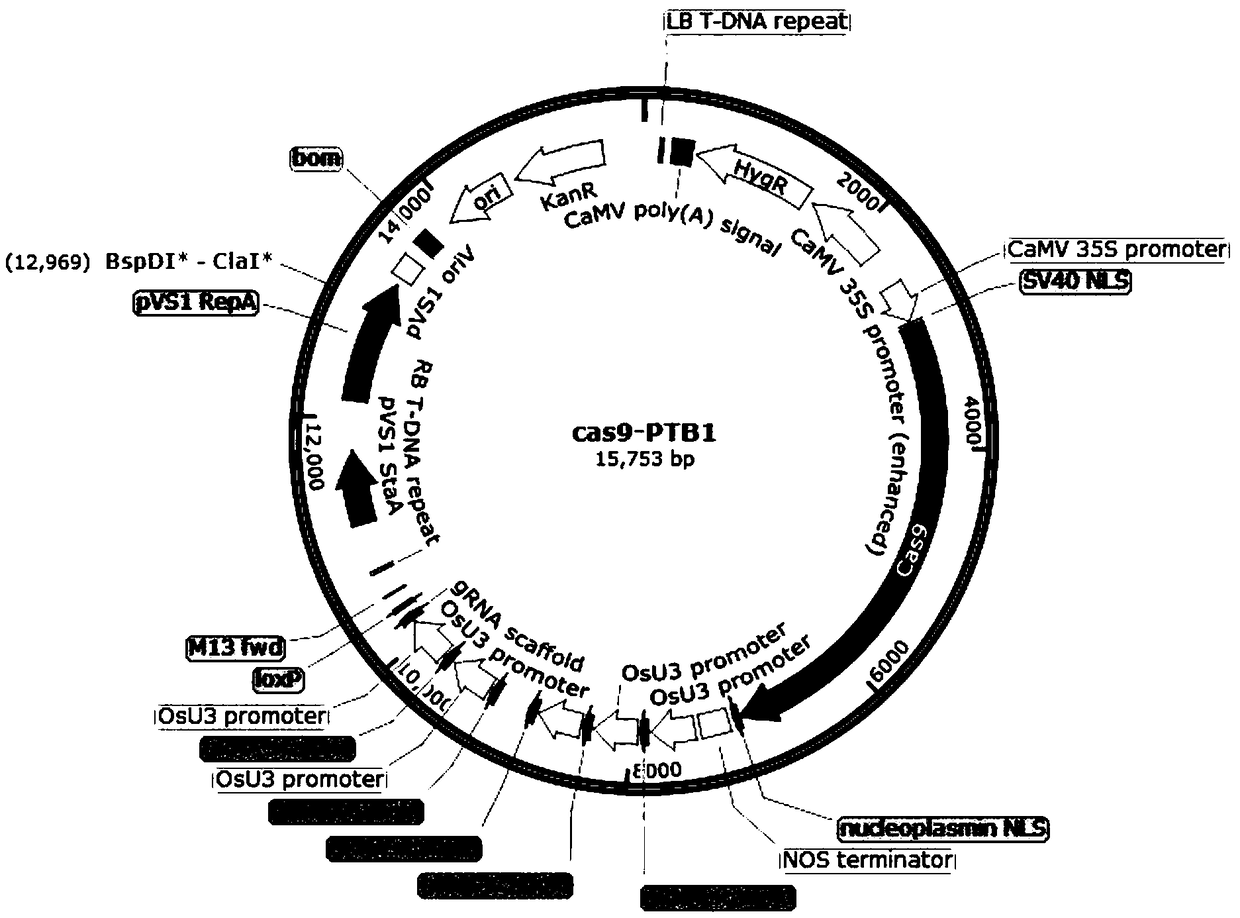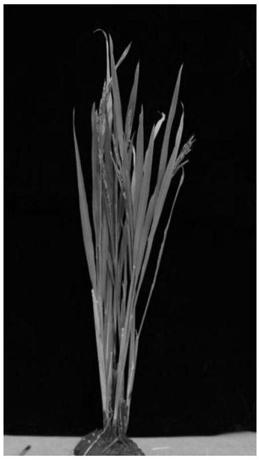Method for rapidly creating engineering female sterile line suitable for mechanized seed production by using genome editing technology
A genome editing and female technology, which is applied in the field of plant molecular biology and agricultural biology, can solve the problems of backward pollination technology, the need for staged insertion of sterile lines and restorer lines, and the difficulty of effective sorting of self-bred seeds. Effects of biological safety, reduction of seed production operation procedures, and convenience of mechanized operation
- Summary
- Abstract
- Description
- Claims
- Application Information
AI Technical Summary
Problems solved by technology
Method used
Image
Examples
Embodiment 1
[0039] Example 1. Using Genome Editing Technology to Rapidly Obtain Female Sterile Materials
[0040] 1. Using CRISPR / Cas9 technology to edit rice wild-type PTB1 gene.
[0041] 1. Target gene target site selection and double-stranded linker design
[0042] Find the position of any NGG (PAM) in the mutation region of the target gene, and the 20th upstream base is the sequence of A (using U3 promoter) or G (using U6a~c promoter) (A, G are U3 and U6 promoters respectively The transcription initiation base of the subunit) is preferably selected as the target sequence. Target specificity checks were performed on MBKbase and RIGWR with the R498 and 9311 genomes respectively, and 2 targets were designed:
[0043] Target 1: acccgaggaaggacaaaaatggg (SEQ ID NO. 2)
[0044] Target 2: ggactgtgataggaacattgtgg (SEQ ID NO. 3)
[0045] Synthesize two primers PTB-B2 primer and PTB-AU2 carrying adapters according to the sequence of the target site (the adapter sequence is complementary to t...
Embodiment 2
[0076] Example 2 Application of female sterile material to mechanized seed production of hybrid rice
[0077] 1. Transferring three gene-linked expression cassettes of female fertility gene, pollen lethal gene and fluorescent selection marker gene into rice
[0078] 1. Construction of concatenated expression vectors
[0079]On the expression vector pCAMBIA1300, three expression cassettes were inserted; the wild-type PTB1 expression cassette, the pollen lethal amylase gene ZM-AA1 expression cassette, and the fluorescent screening marker gene RFP expression cassette. Wild-type PTB1 carries its own promoter and terminator; the amylase gene ZM-AA1 expression box elements include: maize pollen development late specific promoter PG47, maize transit peptide ZM-BT1, maize amylase gene coding sequence ZM-AA1, maize terminator IN2-1; red fluorescent protein gene RP expression cassette elements include: maize seed-specific promoter END2, RP coding sequence on vector pLj02, and potato te...
PUM
 Login to View More
Login to View More Abstract
Description
Claims
Application Information
 Login to View More
Login to View More - R&D
- Intellectual Property
- Life Sciences
- Materials
- Tech Scout
- Unparalleled Data Quality
- Higher Quality Content
- 60% Fewer Hallucinations
Browse by: Latest US Patents, China's latest patents, Technical Efficacy Thesaurus, Application Domain, Technology Topic, Popular Technical Reports.
© 2025 PatSnap. All rights reserved.Legal|Privacy policy|Modern Slavery Act Transparency Statement|Sitemap|About US| Contact US: help@patsnap.com



